When Carmella Selifis started kindergarten this August, she was ready. She knew how to recognize her name. She knew how to stand in line. She had listened to The Very Hungry Caterpillar and had seen caterpillars turn to butterflies in real life. "She was fully ready and excited," says her mother, Karly Kumo Selifis.
That's because, along with her classmates, Carmella had been through the 'Iolani School KA'I Keiki Program in Oahu. The initiative is a partnership between Mutual Housing Association of Hawaii, a NeighborWorks network organization, and 'Iolani School, a private school just down the road from PÄlolo Valley. Held for six weeks each summer, the program serves as an introduction to the classroom for 2- to 5-year-old students who are not yet in kindergarten. "It prepares them," says Dahlia Asuega, resident services manager for PÄlolo Homes. All four of Karly Selifis' children have gone through the program.
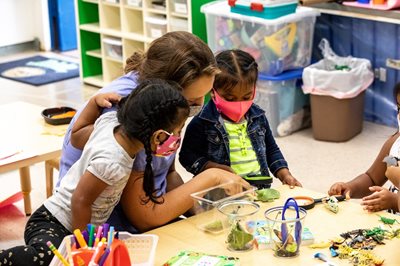 "There was a significant need for early education for children 5 and under," Asuega observes. "Many of our young children were not getting into the pre-school classrooms in our area or they could not afford to pay for one." A partnership of schools, community, and parents, came together to brainstorm on of how to help improve, simplify, and provide access to get children from affordable housing into a classroom environment before entering kindergarten.
"There was a significant need for early education for children 5 and under," Asuega observes. "Many of our young children were not getting into the pre-school classrooms in our area or they could not afford to pay for one." A partnership of schools, community, and parents, came together to brainstorm on of how to help improve, simplify, and provide access to get children from affordable housing into a classroom environment before entering kindergarten.
"This was crucial for children of PÄlolo Homes to succeed in the future of their education," Asuega says. Each year, 40 students go through the program. Staff members also help parents apply to the preschool and Headstart programs at PÄlolo Elementary, so children not yet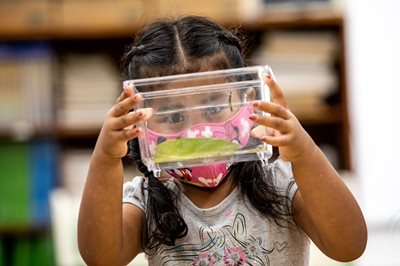 old enough for kindergarten get an even better early childhood education foundation.
old enough for kindergarten get an even better early childhood education foundation.
Before adding the Keiki, or children's program, KA'I focused on older students from the PÄlolo Valley community. It had started with two high schools, situated across from one another. 'Iolani, a private school, had a graduation rate of 100%. The graduation rate at the nearby public school hovered between 64% and 69%. Also nearby was PÄlolo Homes with 63, two-story apartment buildings that featured affordable rents. That was when they first formed the learning partnership. Many NeighborWorks network organizations have become experts in forming partnerships to create sustainable change in their communities.
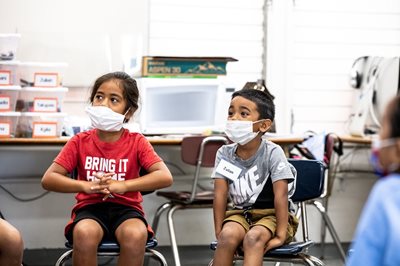 Allison Blankenship, partnering program director from 'Iollani, says their first goal was to fill the learning gap that can be detrimental to lower-income kids. They began with 6th grade students at Jarrett Middle School in PÄlolo Valley. "Our goal was that they were all going to graduate from high school," she says. Over the past 12 years, the program has achieved a 96% graduation rate and an 85% college enrollment rate.
Allison Blankenship, partnering program director from 'Iollani, says their first goal was to fill the learning gap that can be detrimental to lower-income kids. They began with 6th grade students at Jarrett Middle School in PÄlolo Valley. "Our goal was that they were all going to graduate from high school," she says. Over the past 12 years, the program has achieved a 96% graduation rate and an 85% college enrollment rate.
As they met the goal, the focus shifted to the younger children. Experts point to the preschool years as being of critical importance – for the social and emotional learning as well as academic preparation. "Many people now believe preschool education is even more important than a college education," Blankenship adds. They began meeting in 2015 with the students on Mutual Housing's site. May of the students were Micronesian – 61% this year – new immigrants to Hawaii for whom English is a second language. When the program grew too big, the elementary school next door offered them space. "The program keeps growing and our children keep learning," Ausega says.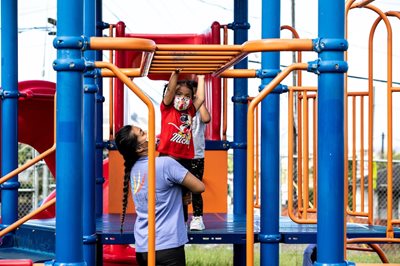
KA'I Keiki even introduced students to their future kindergarten teachers, says Mollie Taylor, lead KA'I Keiki teacher. "The teachers gave us a list of things they wanted us to work on: being comfortable in school, knowing what a routine was like and how to sit together in a group. During the year, the teachers could tell who the KA'I Keiki students were. We wanted our kids to stand out. They'd had early childhood education; they were ready for kindergarten."
In Hawaii, there are 136 private schools. 'Iolani, with 2,300 students, kindergarten through 12th grade, is one of the largest. "There is no free universal preschool in Hawaii," Blankenship says. But the need for that type of education is still there.
Blankenship says the KA'I Keiki fills that need and has little overhead, costing about $50,000 per summer. The space is free. Mutual Housing provides meals for the kids. "There are no transportation costs, because it's right next door. The only cost we have is the teachers and supplies."
Taylor says she hopes the program and the partnership between educators and housing practitioners will serve as a model. "I think it should be used everywhere," she says. "Every kid deserves a quality education at the beginning of their life."
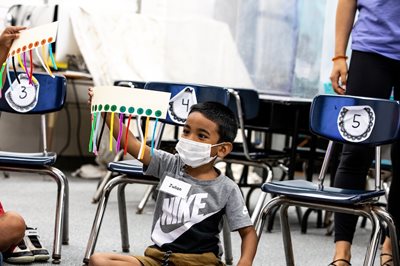 One third of NeighborWorks network organizations have youth programming, ranging from early childhood to college preparatory assistance. "Youth programming, particularly programs focused on early childhood, is incredibly important in supporting the positive growth and development of children into adults," says Romi Hall, NeighborWorks' director of Healthy Homes & Communities. "Making sure kids are ready for their first day of school is critical to creating opportunities for children to be successful in school and life." The KA'I Keiki program is a good network example of how partners can work together, "not only to improve the well-being of individual families, but the entire community, too."
One third of NeighborWorks network organizations have youth programming, ranging from early childhood to college preparatory assistance. "Youth programming, particularly programs focused on early childhood, is incredibly important in supporting the positive growth and development of children into adults," says Romi Hall, NeighborWorks' director of Healthy Homes & Communities. "Making sure kids are ready for their first day of school is critical to creating opportunities for children to be successful in school and life." The KA'I Keiki program is a good network example of how partners can work together, "not only to improve the well-being of individual families, but the entire community, too."
08/23/2021

